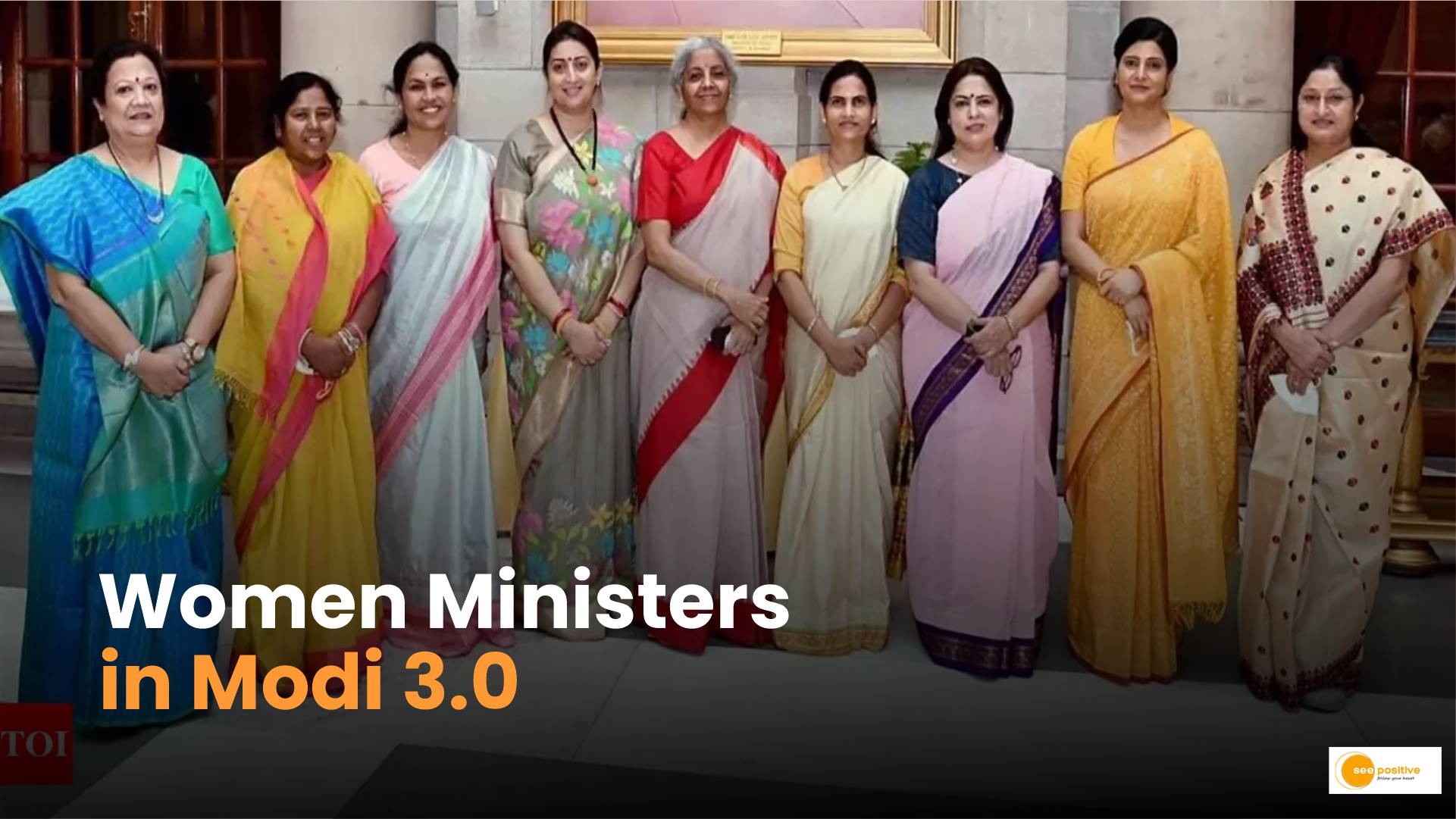Prime Minister Narendra Modi and his Council of Ministers took oath in a grand ceremony on Sunday, June 9th, at the forecourt of the Rashtrapati Bhavan in New Delhi. The third National Democratic Alliance (NDA) government led by the Bharatiya Janata Party (BJP) includes seven women ministers, two of whom hold Cabinet berths.
While some faces have been dropped, others from the previous government have been retained, such as Nirmala Sitharaman, Annapurna Devi, Anupriya Patel, and Shobha Karandlaje.
As the Modi Cabinet 3.0 huddles for its first Union Cabinet meeting, let’s take a look at the women’s representation in this coalition government.
Women’s Representation at the Centre
The number of women in the third Modi government has declined compared to his previous government. In 2019, six women ministers, including BJP’s Nirmala Sitharaman and Smriti Irani, and Shiromani Akali Dal’s Harsimrat Kaur Badal, took the oath of office. A year later, Badal resigned from the Modi government to protest against the Centre’s three farm laws (now repealed).
After a significant Cabinet reshuffle in July 2021, female representation rose to 11 – the highest in 17 years. When Modi first stormed to power in 2014, his government had just eight women ministers. Both Manmohan Singh-led United Progressive Alliance (UPA) governments in 2004 and 2009 had 10 women ministers each.
Old Faces in Modi 3.0
Nirmala Sitharaman
Nirmala Sitharaman returns as a Union minister for the third time. A Rajya Sabha MP, Sitharaman was the Finance Minister in Modi 2.0 and previously held the industry and commerce portfolio in 2014. She became India’s first full-time woman Defence Minister in 2017. In 2019, she was given the finance portfolio, making her the first woman to become a full-time Finance Minister in the country.
Annapurna Devi
Annapurna Devi is the only other woman minister inducted into the Union Cabinet of the third Modi government. Devi was the Union Minister of State (MoS) for Education in the previous Modi government. She hails from the Other Backward Class (OBC) Yadav community and trounced Vinod Kumar Singh of the CPI(ML) Liberation in Kodarma by a massive margin. Devi’s political journey began in 1998, and she made her Lok Sabha debut in 2019, winning the Kodarma seat for the BJP.
Anupriya Patel
Anupriya Patel is the president of Apna Dal (Sonelal), an NDA partner. She won the Mirzapur Lok Sabha seat in Uttar Pradesh. Patel, a prominent leader from the OBC Kurmi community, was a Professor at Amity University before entering politics. She served as Minister of State (MoS) Health in Modi’s first term and returned to the Council of Ministers in 2021 as a junior minister for commerce and industry.
Shobha Karandlaje
Shobha Karandlaje is serving her second stint as a Union minister. Known for her outspoken views on Hindutva, she comes from a Rashtriya Swayamsevak Sangh (RSS) background. Karandlaje was Minister of State (MoS) for Agriculture and Farmers Welfare in the Modi 2.0 government and has again taken the oath as a junior minister.
New Faces in Modi 3.0
Raksha Khadse
Raksha Khadse, a three-time MP from Raver in Maharashtra, belongs to the Leva Patil community, an OBC sub-caste. She defeated Shriram Patil of the Nationalist Congress Party by a margin of 2.72 lakh votes from Raver. Khadse’s induction into the Modi government is significant ahead of the crucial Assembly elections in Maharashtra expected later this year.
Nimuben Bambhaniya
Nimuben Bambhaniya was sworn in as a Minister of State (MoS). She clinched the Bhavnagar Lok Sabha constituency by a remarkable margin of over 4.5 lakh votes against Aam Aadmi Party’s Umesh Makwana. Bambhaniya joined the BJP in 2004 and served as vice president of the BJP Mahila Morcha’s Gujarat unit.
Savitri Thakur
Savitri Thakur, a key tribal leader from Madhya Pradesh, won the Dhar Lok Sabha seat, defeating Congress’ Radheshyam Muvel by over two lakh votes. Fondly called ‘Didi,’ Thakur entered politics in 2003 and has returned to the Lok Sabha this year as a MoS.
Also Read: Why the Lok Sabha Speaker Post is Crucial for PM Modi 3.0
Positive Takeaway
Women’s representation in the third Modi government highlights the ongoing efforts to include more women in significant political roles, though the number has seen a slight decline. The inclusion of both seasoned politicians and new faces reflects the BJP’s strategy to balance experience with fresh perspectives.
By focusing on these women’s achievements and their roles in the government, we can gain insights into the evolving landscape of women’s participation in Indian politics.


